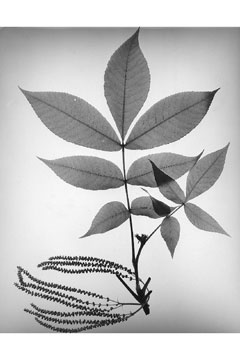 |
|
W.D. Brush @ USDA-NRCS PLANTS Database |
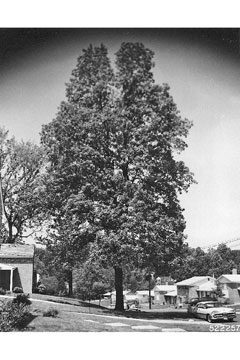 |
| W.D. Brush @ USDA-NRCS PLANTS Database |
Translate this page:
Summary
Due to their adaptability and hardiness, Carya species are highly recommended for long-term, low-maintenance nut production. Grafted trees can yield a valuable nut crop within 3 – 4 years of planting and grow to a height of 12m (40ft). Several species have excellent edible nuts, rich in oils and B vitamins, and are native to North America. They have a lovely autumn colour. Most species in this genus have a wide distribution range, and seeds from the most appropriate provenances should be sought to find trees more suited to your growing conditions. Pecan (C. illinoinensis) is a fast-growing, large tree with sweet and delicious nuts. Eat the nuts raw or cooked; they make an excellent dessert, are added to ice cream, and are used in cakes and bread. Milk is made from nuts and thickens soups, season corn cakes, and hominy. Harvest in late autumn; eat immediately or store in a cool place in the shell for up to six months. Nut oil is edible and a staple crop. They cast a heavy shade in leaf, but because they are late coming into leaf (usually late spring) and lose their leaves early in the autumn, they are eminently suitable for mixed woodland planting with shrubs and other trees beneath them. Hickories are smaller trees with tinier nuts and prefer more humid conditions. Shellbark Hickory (C. laciniosa) and Shagbark Hickory (C. ovata) both have excellent nuts and grow to about 30m (100ft). Mockernut (C. tomentosa), another US native, is found mainly along ridges, dry hills and hillsides. Use the nuts in a similar way to pecans. Several North American hybrids produce delicious nuts, especially the Hicans, hybrids between C. illinoinensis and other Carya species. Bloom Color: Green.
Main Bloom Time: Early spring, Late spring, Mid spring. Form: Oval.
Physical Characteristics

 Carya tomentosa is a deciduous Tree growing to 30 m (98ft 5in) at a medium rate.
Carya tomentosa is a deciduous Tree growing to 30 m (98ft 5in) at a medium rate.
See above for USDA hardiness. It is hardy to UK zone 4. It is in leaf from June to November, in flower in June, and the seeds ripen in October. The species is monoecious (individual flowers are either male or female, but both sexes can be found on the same plant) and is pollinated by Wind. The plant is self-fertile.
It is noted for attracting wildlife.
Suitable for: light (sandy), medium (loamy) and heavy (clay) soils and can grow in nutritionally poor soil. Suitable pH: mildly acid, neutral and basic (mildly alkaline) soils. It cannot grow in the shade. It prefers dry or moist soil.
UK Hardiness Map
US Hardiness Map
Synonyms
C. alba. non Nutt. Juglans tomentosa.
Plant Habitats
Woodland Garden Canopy;
Edible Uses
Edible Parts: Sap Seed
Edible Uses:
Seed - raw or cooked[1, 43, 101, 159]. A delicious sweet taste but the thick, hard shell makes extraction very difficult[2, 183, 226]. The kernel is quite small considering the size of the nut[226]. Even squirrels leave the seed to accumulate under trees[117, 183]. The seed can be up to 6cm long[229]. The seed ripens in late autumn and, when stored in its shell in a cool place, will keep for at least 6 months[K]. Sap - used as a drink. Tapped in spring, it has a sweet flavour[101].
References More on Edible Uses
Medicinal Uses
Plants For A Future can not take any responsibility for any adverse effects from the use of plants. Always seek advice from a professional before using a plant medicinally.
Astringent Detergent
The inner bark is astringent and detergent[257]. It has been used as a dressing for cuts and has also been chewed to treat sore mouths[257].
References More on Medicinal Uses
The Bookshop: Edible Plant Books
Our Latest books on Perennial Plants For Food Forests and Permaculture Gardens in paperback or digital formats.
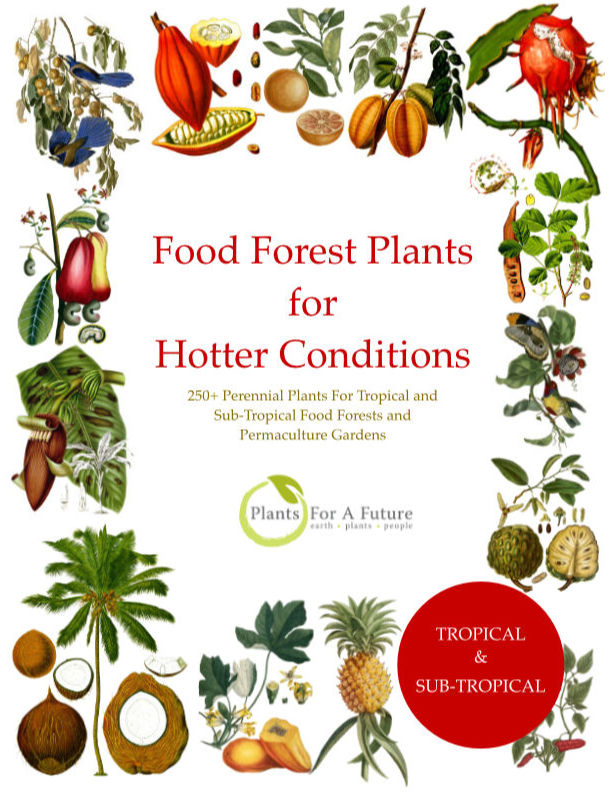
Edible Tropical Plants
Food Forest Plants for Hotter Conditions: 250+ Plants For Tropical Food Forests & Permaculture Gardens.
More
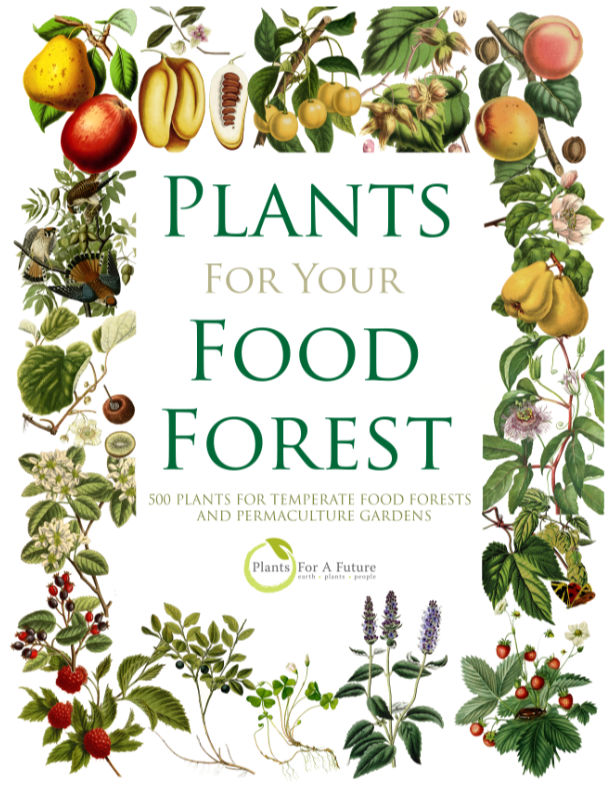
Edible Temperate Plants
Plants for Your Food Forest: 500 Plants for Temperate Food Forests & Permaculture Gardens.
More
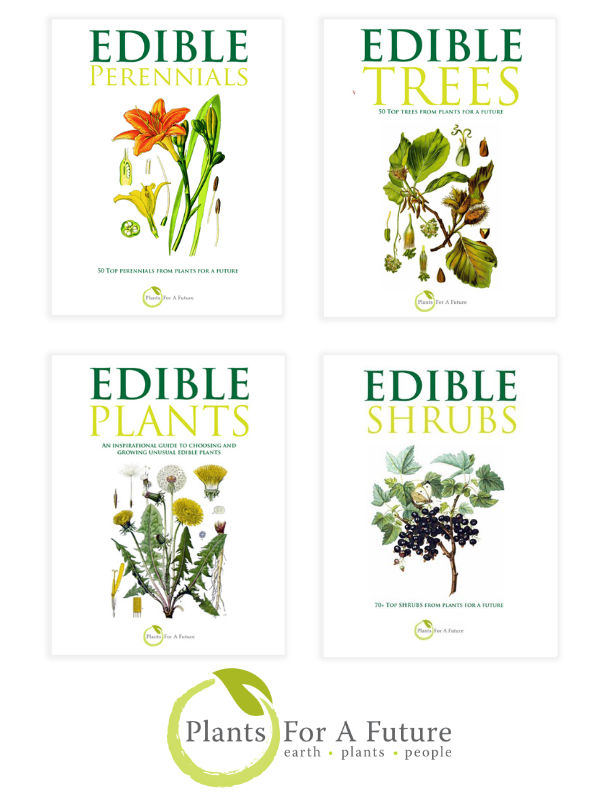
More Books
PFAF have eight books available in paperback and digital formats. Browse the shop for more information.
Shop Now
Other Uses
Dye Fuel Repellent Wood
Agroforestry uses:
Carya species can be used as shade trees and are valuable in agroforestry systems for their high-quality timber and nut production. They can also enhance biodiversity and provide habitat for wildlife.
A black dye is obtained by boiling the bark in a vinegar solution[229]. A beige dye is extracted from the leaves and twigs, cream of tartar is required as a mordant[226]. A yellow dye is obtained from the bark when alum is used as a mordant[226]. The inner bark has been used to finish baskets and to make chair bottoms[257]. The leaves have been scattered about to repel insects[257]. Wood - close-grained, tough, elastic, very heavy, hard[61, 82, 227, 229]. It weighs 51lb per cubic foot[227]. The wood has excellent bending qualities and can withstand compression better than most other woods[229]. One of the best hickory woods, it is an important commercial timber and is used for vehicle parts, tool handles, fuel etc[61, 63, 82, 227, 229]. 1. Nectary - Flowers rich in nectar and pollen:
No – Carya species flowers are wind-pollinated and not known for being rich in nectar or attracting large numbers of pollinators.
2. Wildlife - Food (Fruit, Seeds, Leaf litter, Shelter, Nesting, Roosting):
Yes – The nuts (pecans and hickory nuts) are an important food source for wildlife, including birds, squirrels, and other small mammals. The dense canopy provides good shelter, and the trees can be used for bird nesting and ro, the.
3. Invertebrate Shelter (Overwintering sites, Leaf litter, Groundcover):
Yes – The rough bark and fallen leaves provide overwintering sites for invertebrates, and leaf litter offers ground cover for various organisms.
4. Pest Confuser (Smell):
No – Carya species do not emit a smell that repels pests or confuses them.
Special Uses
References More on Other Uses
Cultivation details
Landscape Uses:Aggressive surface roots possible. Prefers a deep moisture-retentive loam in a sunny sheltered position, requiring a good summer for best development[1, 63, 137, 200]. Succeeds in poor soils[63] and in drier soils than many other members of the genus[200]. Generally a slow growing tree[200] though it is fast when young[149]. Trees respond well to coppicing[149]. A very ornamental and long-lived tree[1, 227], it is quite successful in Britain[137] and has been planted on an experimental scale for its timber in Germany[50]. Most species in this genus have quite a wide range of distribution and, in order to find trees more suited to this country, seed from the most appropriate provenances should be sought[137]. Most trees growing in Britain at present tend to only produce good seed after hot summers[137]. Trees in the wild commence fruiting when about 20 years old, with an optimum seed bearing age from 40 - 150 years, though they often live for 300 - 500 years[229]. Trees are self-fertile but larger crops of better quality seeds are produced if cross-pollination takes place[229]. Plants are strongly tap-rooted and should be planted in their permanent positions as soon as possible[1, 137]. Sowing in situ would be the best method so long as the seed could be protected from mice[1, 200]. Trees are late coming into leaf (usually late May to June)[137], but lose their leaves later in the autumn than other Carya species229]. During this time they cast a heavy shade. These factors combine to make the trees eminently suitable for a mixed woodland planting with shrubs and other trees beneath them[137]. Plants in this genus are notably resistant to honey fungus[200]. Special Features:North American native, Attractive flowers or blooms.
References Carbon Farming Information and Carbon Sequestration Information
Temperature Converter
Type a value in the Celsius field to convert the value to Fahrenheit:
Fahrenheit:
The PFAF Bookshop
Plants For A Future have a number of books available in paperback and digital form. Book titles include Edible Plants, Edible Perennials, Edible Trees,Edible Shrubs, Woodland Gardening, and Temperate Food Forest Plants. Our new book is Food Forest Plants For Hotter Conditions (Tropical and Sub-Tropical).
Shop Now
Plant Propagation
Seed - requires a period of cold stratification. It is best sown in a cold frame as soon as it is ripe[78]. Stored seed should be kept moist (but not wet) prior to sowing and should be sown in a cold frame as soon as possible[78]. Where possible, sow 1 or 2 seeds only in each deep pot and thin to the best seedling. If you need to transplant the seedlings, then do this as soon as they are large enough to handle, once more using deep pots to accommodate the tap root. Put the plants into their permanent positions as soon as possible, preferably in their first summer, and give them some protection from the cold for at least the first winter[78, K]. Seed can also be sown in situ so long as protection is given from mice etc and the seed is given some protection from cold[200] (a plastic bottle with the top and bottom removed and a wire mesh top fitted to keep the mice out is ideal)
Other Names
If available other names are mentioned here
Native Range
NORTHERN AMERICA: Canada, Ontario (south), United States, Indiana, Michigan (south), New Jersey, New York, Ohio, Pennsylvania, West Virginia, Illinois, Iowa, Kansas, Missouri, Nebraska, Oklahoma, Alabama, Arkansas, Delaware, Florida, Georgia, Kentucky, Louisiana, Maryland, Mississippi, North Carolina, South Carolina, Tennessee, Virginia, Texas,
Weed Potential
Right plant wrong place. We are currently updating this section.
Please note that a plant may be invasive in one area but may not in your area so it's worth checking.
Conservation Status
IUCN Red List of Threatened Plants Status :

Growth: S = slow M = medium F = fast. Soil: L = light (sandy) M = medium H = heavy (clay). pH: A = acid N = neutral B = basic (alkaline). Shade: F = full shade S = semi-shade N = no shade. Moisture: D = dry M = Moist We = wet Wa = water.
Now available:
Food Forest Plants for Mediterranean Conditions
350+ Perennial Plants For Mediterranean and Drier Food Forests and Permaculture Gardens.
[Paperback and eBook]
This is the third in Plants For A Future's series of plant guides for food forests tailored to
specific climate zones. Following volumes on temperate and tropical ecosystems, this book focuses
on species suited to Mediterranean conditions—regions with hot, dry summers and cool, wet winters,
often facing the added challenge of climate change.
Read More
Expert comment
Author
(Poir.)Nutt.
Botanical References
1143200
Links / References
For a list of references used on this page please go here
Readers comment
| Add a comment |
|
If you have important information about this plant that may help other users please add a comment or link below. Only comments or links that are felt to be directly relevant to a plant will be included. If you think a comment/link or information contained on this page is inaccurate or misleading we would welcome your feedback at [email protected]. If you have questions about a plant please use the Forum on this website as we do not have the resources to answer questions ourselves.
* Please note: the comments by website users are not necessarily those held by PFAF and may give misleading or inaccurate information.
To leave a comment please Register or login here All comments need to be approved so will not appear immediately.
|
Subject : Carya tomentosa
|
|
|
|